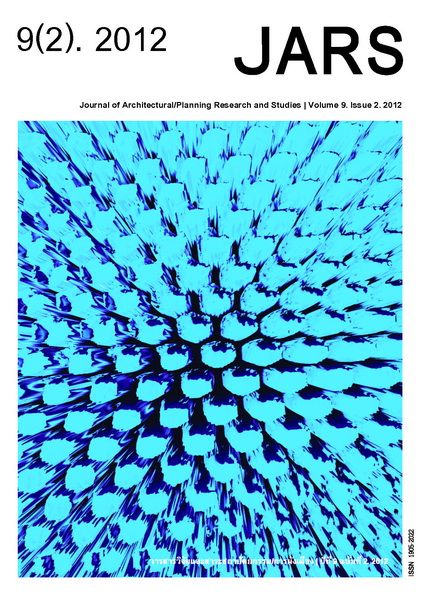Strategies for Construction Waste Reduction in Small Residential Buildings
Main Article Content
Abstract
Growth of construction industry and expansion of small residential projects cause an increase in construction waste. According to previous research, construction debris frequently makes up approximately 30% of the waste received at many landfill sites. In Bangkok, construction wastes account for approximately 0.5% of all wastes generated each day. This research studied the factors causing architectural wastes generated by the design process and project operation of small residential building project. Research methods included the analysis of construction drawings of the model houses, and the material balance method for calculating the waste generated from the design process and project operation. The physical survey and interview according to USEPA principles were included. The guidelines for project administration to reduce construction wastes from sources and to enhance the construction process were presented. It was found that the ceiling works caused the most construction material waste in the design process. Consequently, better management of construction materials and project planning can reduce construction waste in construction sites.
Downloads
Article Details

This work is licensed under a Creative Commons Attribution-NonCommercial-NoDerivatives 4.0 International License.
All material is licensed under the terms of the Creative Commons Attribution 4.0 International (CC-BY-NC-ND 4.0) License, unless otherwise stated. As such, authors are free to share, copy, and redistribute the material in any medium or format. The authors must give appropriate credit, provide a link to the license, and indicate if changes were made. The authors may do so in any reasonable manner, but not in any way that suggests the licensor endorses you or your use. The authors may not use the material for commercial purposes. If the authors remix, transform, or build upon the material, they may not distribute the modified material, unless permission is obtained from JARS. Final, accepted versions of the paper may be posted on third party repositories, provided appropriate acknowledgement to the original source is clearly noted.
References
Chen, Z., Li, H., & Wong, C. T. C. (2002). An application of bar-code system for reducing construction wastes. Automation in Construction, 1(5), 521–533.
Faniran, O. O., & Caban, G. (1998). Minimizing waste on construction project sites. Engineering Construction and Architectural Management, 5(2), 182-188.
Ferguson, J., Kermode, N., Nash, C. L., Sketch, W. A. J., & Huxford, R. P. (1995). Managing and minimizing construction waste: A practical guide. Institute of Civil Engineers, London.
Gavilan, R. M., & Bernold, L. E. (1994). Source evaluation of solid waste in building construction. Journal of Construction Engineering and Management, 120(3), 536-552.
Hanisch, J. (1991). Aspects of processing techniques for recycling of bulk material. Mineral Processing, 32(1), 10-17.
Karim, K., & Marosszeky, M. (1999). Waste minimisation in comercial construction: A handbook for training of supervisors. Australian Centre for Construction Innovation, New South Wales.
Kokkaew, N. (2002). การศึกษาแนวทางในการลดปริมาณของเสียจากการก่อสร้างในประเทศไทย [A study of a guideline for minimizing construction waste in Thailand]. Master of Engineering Thesis, Faculty of Engineering, Chulalongkorn University, Bangkok, Thailand.
National Statistical Office of Thailand. (2004). การสำรวจอุตสาหกรรมก่อสร้างทั่วราชอาณาจักร [Survey of the construction industry in Thailand]. Bangkok, Thailand: Author.
Peungdokmai, K. (2002). วิธีการคาดคะเนปริมาณขยะก่อสร้างที่เกิดขึ้นในหน่วยงาน [A methodology for forecasting construction waste generated on sites]. Master of Engineering Thesis, Faculty of Engineering, Thammasat University, Pathumthani, Thailand.
Pollution Control Department. (2010). องค์ประกอบและปริมาณขยะมูลฝอยพื้นที่กรุงเทพมหานคร [Types and quantity of wastes in Bangkok]. Retrieved August, 11, 2010, from http://www.pcd.go.th/count/wastedl.cfm?FileName=waste_volumn.xls.
Poon, C. S., Yu, Ann T. W., & Ng, L. H. (2003). Comparison of low-waste building technologies adopted in public and private housing project in Hong Kong. Engineering, Construction and Architectural Management, 10(2), 88-98.
United States Environmental Protection Agency [USEPA]. (1988). Waste minimization opportunity assessment manual. Ohio: USEPA.


